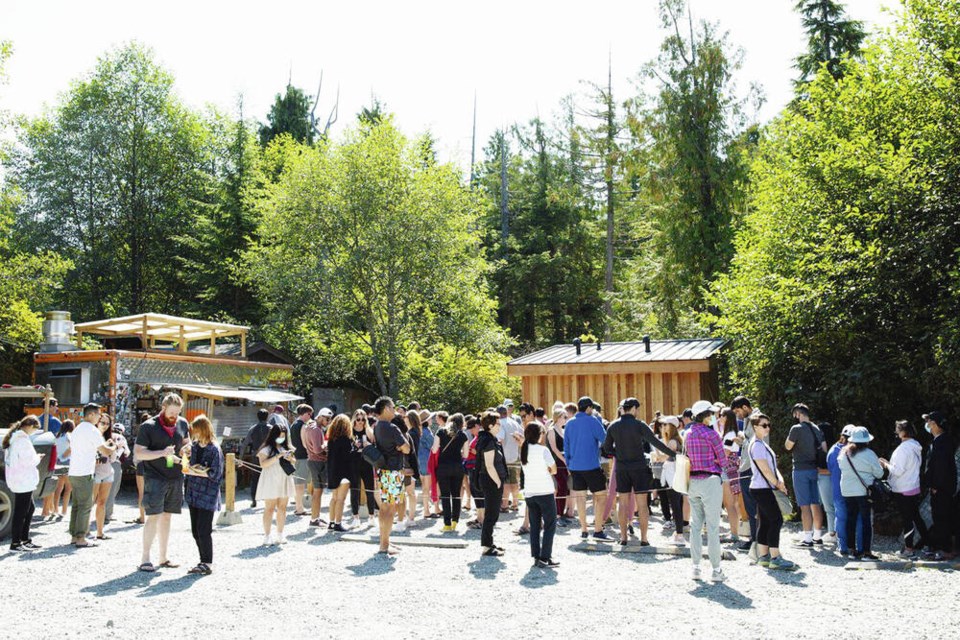TOFINO — Communities across the west coast of the Island are facing labour shortages, forcing some businesses to adjust their operations.
Lewis and Cathy George have been operating the House of Himwitsa, a First Nations art gallery and lodge in Tofino, since 1991. In previous years, Cathy said their storefront would be open from 9:30 a.m. until as late as 7 p.m. But without enough staff, Cathy said they now have to close their shop as early as 4 p.m.
“We don’t have the staff,” she said. “It’s kind of heartbreaking.”
Cathy regularly works 10-hour days to compensate for staffing shortages.
“I have to,” she said. “There’s no other way.”
When Terry Deakin launched INEO Employment Centres in Port Alberni 22 years ago, it was created to facilitate a Services Canada pilot project that aimed to provide services to those struggling to enter the job market.
In the 22 years Deakin has been running INEO, she said she’s never had a problem filling their programs.
“We are struggling right now,” she said. “There are so many job opportunities out there. People can apply for jobs and get them, even if they can’t keep them.”
The skills training for employment offered by INEO are usually operated at 100 per cent capacity. This year, Deakin said occupancy rates have dropped to 60 per cent for the first time.
While Deakin said she doesn’t think the labour shortage is caused by the COVID-19 pandemic, “it is correlated.”
“People who were laid off or shut down because of the pandemic and were close to retirement age have decided just to stay at home,” she said. “The other piece of it is that people are able to work from home.”
And as for the rest of the workers, Deakin said she’d be a “magician” if she knew where the answer lies.
“The demand [for workers] is extremely high all across the board,” she said. “Everybody keeps thinking it’s just the hospitality and tourism sectors that are crying for help right now. But as far as I can see, it’s everywhere — every industry is looking for people.”
It’s a sentiment shared by Bill Brown, manager of employer services for Work B.C. in Port Alberni.
“The labour market was tightening up before the COVID-19 pandemic, he said. “The pandemic just made that happen much more quickly.”
To keep people safe during the pandemic, the government’s response was to send workers home — “and pay them to stay home,” said Brown.
The Canada Emergency Response Benefit (CERB) provided financial support to employed and self-employed Canadians who were directly impacted by COVID-19.
“But what we noticed is that when the benefits ended, [employers] still had a hard time finding workers,” he said.
And yet, Canada’s unemployment rate was 4.9 per cent in July — a record low, according to Statistics Canada.
Places like Tofino have their own very specific labour market challenges, said Brown.
“They need a workforce that’s bigger than the number of people who live there,” he said. “[Tofino] relies on a workforce that comes from somewhere else. And there isn’t housing and there isn’t good local transportation for people to get to their jobs.”
Despite only having a population of roughly 2,000 residents, Tofino draws about 600,000 visitors every year.
The median cost of a one-bedroom rental unit in Tofino and Ucluelet rose by 71 per cent between 2017 and 2020 to $1,200, according to the 2021 Clayoquot Biosphere Trust’s Vital Snapshot report. Two-bedroom units saw an increase of 6 per cent to $1,480, and three-bedroom units surged by 38 per cent to $2,200.
— Ha-Shilth-Sa
>>> To comment on this article, write a letter to the editor: letters@timescolonist.com



